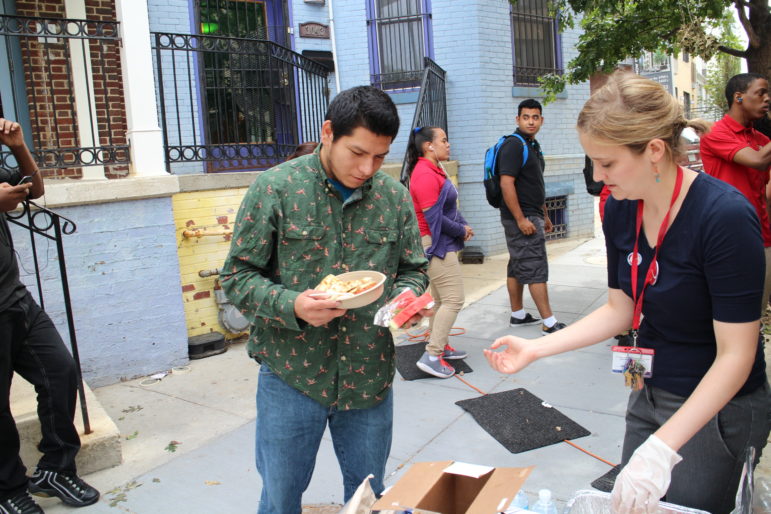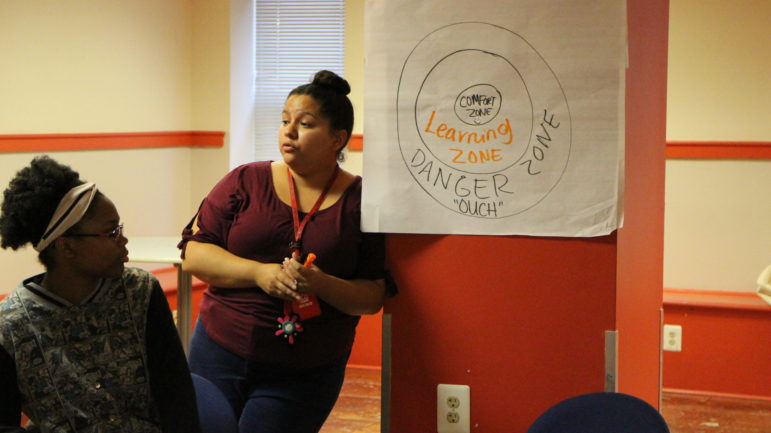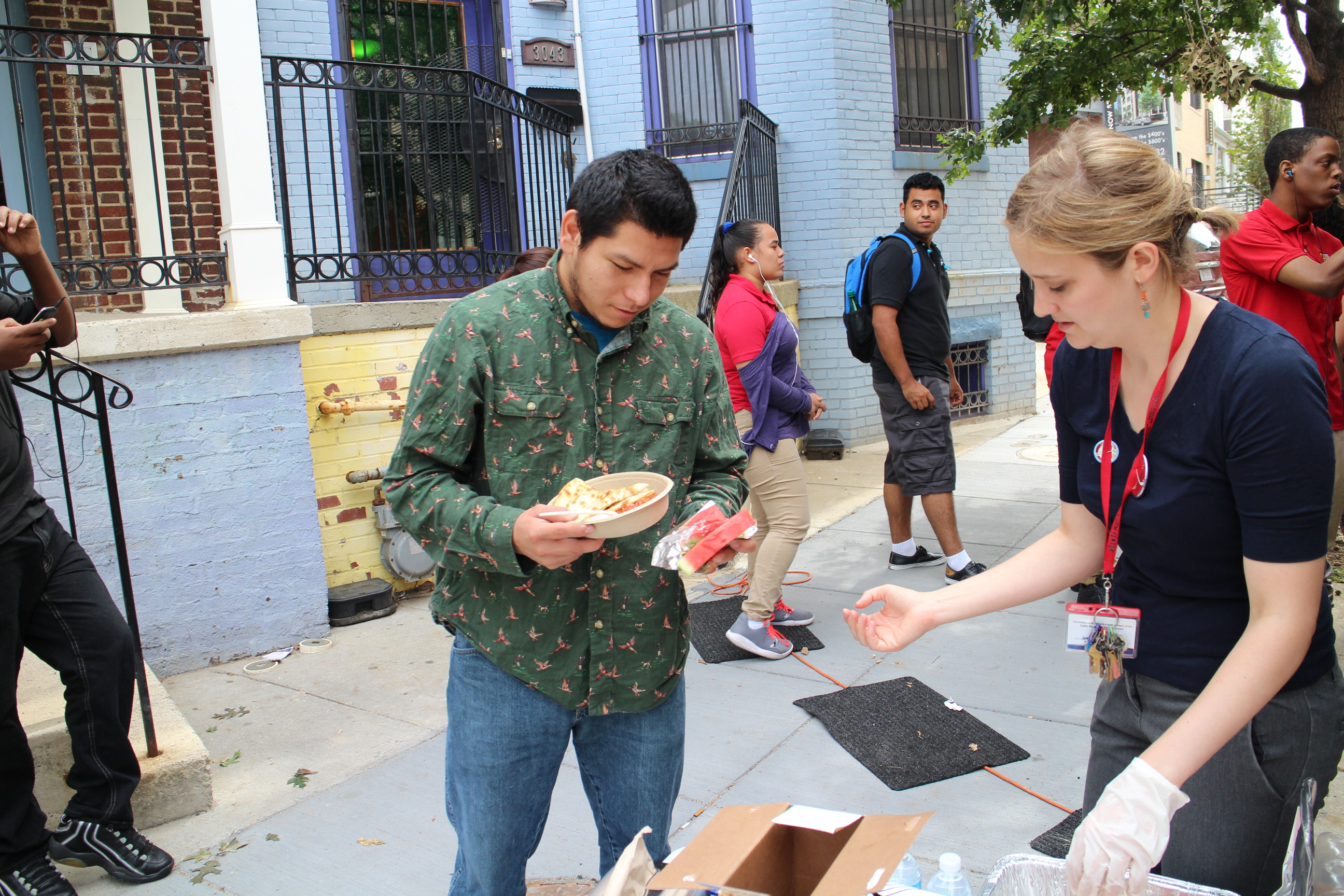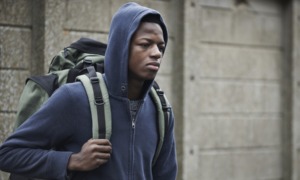The nonprofit Latin American Youth Center offers teens and young adults a sense of community and prosperity outside of gang life.
WASHINGTON — Two years ago, 18-year-old Josue left Guatemala, a country with one of the highest crime rates in Central America, and set out on his own to find a better life. In Washington, District of Columbia, he found a sanctuary to study and socialize at the Latin American Youth Center — with its free snacks, computer access and caring community.
“Sometimes, when I feel separated between the things in the outside world, here is where I can talk to somebody about what I feel,” Josue said. His hands rub together beneath the sleeves of his navy blue Bell Multicultural High School sweatshirt. “When I feel lonely, I come to here. Here it is like family.”
Josue learned about the nonprofit LAYC through a local church. He wants to finish school and join the U.S. Army once he is through immigration court.
Josue is one of the Center’s success stories from a community in increasing turmoil. MS-13 and 18th Street gang members made their presence known in the neighborhoods of Columbia Heights, Adams Morgan and Mount Pleasant with a series of knife attacks last summer. Multiple murders and kidnappings have been reported throughout New England as the gangs’ ranks swell with newly arriving vulnerable immigrants like Josue, looking for a sense of community.
The Latin American Youth Center
LAYC is a nonprofit multicultural organization for youth and families that offers safe housing, educational, vocational and social service programs. The Center supports a diverse population of youth with social, educational and career needs.
LAYC incorporated in 1974. “There were a lot of Central Americans coming from El Salvador, from Central America,” said Claudia Diaz, an LAYC youth developer who attended the Center herself as a kid. “There were refugees from the civil war that was happening there, and they needed a safe place to be. They were getting upset that the Latinos were not being represented. … [The organization] started to create a center specifically for Latinos, to give them a safe place to come, to give services, to understand their rights. It started evolving into after-school … GED and workforce programs. A lot of things started happening after that.”
The Center also works with other nonprofits. People line up down the block when the Seva Food Truck stops by twice per month to distribute free meals. And the program finds transitional housing in apartments or foster homes with LAYC or other community organizations when needed.

Jesus Gutierrez receives a slice of watermelon from LAYC community schools coordinator Carolyn Greenspan as people line up for quesadillas at the Seva Food Truck, which partners with LAYC.
John Van Zandt, the LAYC Safe Housing manager, said collections of young gang members sleep in the streets or camp out behind the high schools that some of them dropped out of rather than mix with older crowds in homeless shelters. Young people new to Washington without positive paths are especially vulnerable to gang recruitment. Language barriers, poverty and displacement are only a few of their trials, especially if they entered the country alone.
“It’s a very complicated storyline, because a lot of it has to do with extortion and relationships between their country of origin and their families, and where people live and how they got here,” said Lori Kaplan, LAYC president and CEO.
Previous success reducing gang violence
Methods from the Gang Intervention Partnership should be reimagined to address present problems, Kaplan said. Police, schools and out-of-school-time programs would be brought together to offer the youth alternative choices.
“I think that the best thing we can do is to be alert to [gang] issues inside the schools, to be alert to those issues inside the youth center, to offer alternatives to engagement in any kind of gang activity. The bigger picture really has to be multi[faceted], where police, schools and community and elected officials are all working together to try to address the bigger issue of [gangs like] MS-13 in the community.”
The LAYC joined Collaborative Solutions for Communities in the Gang Intervention Partnership in 2003. Since the summer of 1999, 21 young people had died, of the victims of 40 shootings or stabbings in the neighborhoods of Shaw and Columbia Heights. The partnership brought together after-school organizations, police and school officials to work together in decreasing gang activity in the city.
“We had a very vibrant gang intervention task force some years ago,” Kaplan said.
The task force worked to understand the root causes of gang involvement and how to unify, progress and prevent violence by implementing public outreach, intelligence gathering, information sharing, support services and social activities to decrease violence in the community. The partnership was a success in stemming the tide of Latino gang violence, according to a Sept. 13, 2006, report from the Center for Youth Policy Research and the D.C. mayor’s Office on Latino Affairs. While violent crime spiked in other regions, there were no Latino gang-related homicides recorded in the District since Oct. 9, 2003. The police attributed this success to the communicative multiagency partnerships, made possible by gang prevention funding, personnel and advocates.
As gang activity decreased inside the city, it increased outside its boundaries in such counties as Montgomery, Prince George’s, Arlington and Fairfax. “When we had the gang intervention task force, there were some real years of multisectorial collaboration, and I feel like we had some real advances in D.C.,” Kaplan said. “Some of that may have just moved out to the suburbs. But, now it seems like over the last few years it is sort of rearing its head again. Whether that was 18th Street or MS-13, it was all sort of percolating.”
For the past couple years, gangs have made a comeback in District neighborhoods like Columbia Heights, as more immigrants attempt to find their way in a new city and are pulled into the criminal collective. “Part of that uptick may have to do with more recent arrivals, who are seen as very susceptible to gang involvement and recruitment, based on their country of origin,” Kaplan said.
Vulnerable kids and new arrivals
Mara Salvatrucha (MS-13) and 18th Street Gang are among the most active criminal organizations in Washington. The Council on Foreign Relations traces their roots back to Los Angeles, during the riots of 1992. The LAPD believed an obscure group of Salvadoran immigrants, known as Mara Salvatrucha (slang for a shrewd person) was involved in the looting and violence.
Today Young people like Josue enter the country knowing only a few family members, if anyone. Gangs can become a surrogate family. Fox News Latino reported that MS-13 was among several gangs in 2015 vying to recruit more than 3,000 migrant minors who settled in Long Island, New York, alone.
Josue was fortunate to move in with his adopted father, who had left Guatemala 12 years prior and joined 18th Street for a time. Now, the two work in restaurants to split the rent bill, while Josue attends school during the day.
In Guatemala, he said, cliques pressured young people to join gangs by promising a better life if they would commit murder to prove loyalty. In the District he has seen similar pressures on other people, but his family affiliations keep him from joining that lifestyle.
“I have family in those [gangs]. I’m not in, and I’ve never been in, because if I’m in, I know what I have to do,” Josue said, amid the banging of the Center’s Street Outreach Program washing machines. “I don’t want to go in there. I know what kind of life it is going to be.”
How to serve and protect?
Van Zandt, the Safe Housing manager, said these gangs center around different high schools. Roosevelt Senior High School is dominated by18th Street. A mile and a half away, Cardozo High School is filled with MS-13. The Street Outreach Program tries to remain neutral territory, with members from both gangs frequenting the Center when they need help. The Center’s policy is to aid anyone in need, whether it is with a shower, food or a place to sleep.
“To be honest, when they are in here, they don’t really pose a threat to us,”Van Zandt said. “They are just kids. They put up a front when they are out there, but they are staying outside. They are homeless, and they are teenagers.”
Despite his confidence in the kids, Zandt still worries about the safety of the staff and other youth at the Center. Christian Mendoza, who was part of the gang-related incidents that put District police on alert in early September, used to attend the LAYC Career Academy and came to the Street Outreach Program to eat and shower. After his group of homeless friends left for the day, Zandt would find MS-13 calling signs written on pieces of paper around the computers. Mendoza, then 18, was arrested in September on two counts of robbery, two counts of assault with intent to kill and two counts of assault with a dangerous weapon.
Since his arrest, 18th Street members have begun to arrive at the Center, some of them much older than the usual clientele. “Some of them would hang out on the front porch with baseball bats,” Van Zandt said.
He contacted Metro Police Department Officer Eliseo Medina for advice. The Spanish-speaking cop has worked in the community for years and is familiar with the local crews. It wasn’t meant to be a scare tactic, but when Medina arrived, he spotted and arrested a young 18th Street affiliate with a warrant. A BB pistol was found in his backpack.
These are the daily struggles LAYC staff members manage while supporting the youth of the community. They want to offer people like Josue an opportunity to achieve their goals while staying open to the young gang members who still look for a different path in their lives.
The Club
LAYC created the Club program to engage 14- to 19-year-olds who are involved in or are at risk of being involved in gangs, violence or delinquency. The program gives kids the opportunity to discuss the violence permeating the culture and organizations they are being raised in.
The Club staff members want kids to think about how water can change its forms as it flows. “Life in us is like the water in a river,” wrote transcendentalist Henry David Thoreau. Sometimes it runs smoothly over small pebbles, while other times it is churned into torrents by large boulders. It can evaporate and float above the world, or freeze and stick to the riverbank.
“They start to think about their lives in that manner,” said Claudia Diaz, a LAYC youth developer. “And when they start to share, a lot of things come out, and they just become aware, like, ‘Man, maybe I do need to talk to someone.’ And we are there to reinforce [that] it’s OK to talk.”

LAYC youth developer Claudia Diaz discusses the zones of conversation with Club members. Diaz said she wanted kids to get out of their comfort zones by sharing and learning from each other, without being offensive. The kids were instructed to say “ouch” when they felt a conversation becoming offensive.
Diaz leads the program and brings kids together to talk about their lives, build a sense of community and try to find solutions to problems. When life becomes like a rapid river, many youth seek stability through an accepting community of their peers, like a gang, who will listen and respect their outlooks. But, this sort of family unit leads many youth toward crime and incarceration, frozen at the edge of society. The Club was created as an alternative, where young people can constructively discuss their problems.
Seventeen-year-old Carmen Bonilla said she enjoys the Club’s Socratic discussions as she prepared chips and salsa with Karen Marquez, 15, for the Club’s orientation day this fall. She said kids need more opportunities to discuss what’s going on in the community and around the world, so they will be more aware of how their actions will affect their lives and those around them.
“One of my big issues that I see especially around my school is that students, when it comes to college, they don’t think that they can make it,” Bonilla said. “I think that’s pretty sad, because most students’ parents are immigrants, so it took a lot for them to come here, and then do a lot and sacrifice for their kids to [not] think they can make it [in school].”
Diaz doesn’t bring up gangs unless the kids wants to talk about it. Instead, she tries to offer them alternatives and different outlooks on life that allow them to consider different paths.
“We’re giving them knowledge to understand why they might find refuge in gangs, why they might want to participate in gangs, but also understanding there’s a need that’s not being met,” Diaz said. “Our club is also [about] understanding their support systems; which ones are positive and which ones are negative, and the ones that they need to prevail, to continue on and grow as healthy adults.”
On one of the first Club days, Diaz asked the three boys and seven girls to form a circle. They put their hands in the center and each grasped the left hand of someone on the other side of the circle, then the right hand of a different person, so that everyone was linked to two people, forming a tangled knot of arms. This exercise shows how people can build and arrange bonds in a community. Everyone is connected through the neighborhood, but it takes a little thought and teamwork to straighten everything out into a peaceable system, Diaz said.
“[They learn] cooperation, understanding, patience and [leadership],” said Aleksandra Ristova, a Macedonian fellowship member who helps with the Club. “They learn that to make this right, they have to work together to get to the solution.”
The kids worked together to straighten themselves out, jumping hurdles made of held hands, climbing through uncomfortable spaces between one another and, after several trials of thought and patience, found themselves arranged in a circle, again. Kaplan hopes the after-school organizations, schools and police force will similarly come together to form a solution to gang activity,
Through the game, they learn to get involved with solutions, even if they aren’t involved directly with the problem, because everyone is connected to each other. Everyone is tangled in the knot of a neighborhood, but people need to work together to arrange the links and bring harmony from confusion.
“To build community is to build bonds between one another, here,” Diaz told the kids at the conclusion of the meeting. “What’s another word for community?” she asked the group.
“Togetherness,” Bonilla replied.
Other suggestions came, like strength, teamwork, cooperation, faith and family.
“That’s what we are,” Diaz said. “The Club represents peace and community. We build community, here. We build peace, here, to be representatives of community and peace, out there.” She pointed toward the front door. “We are community leaders.”































